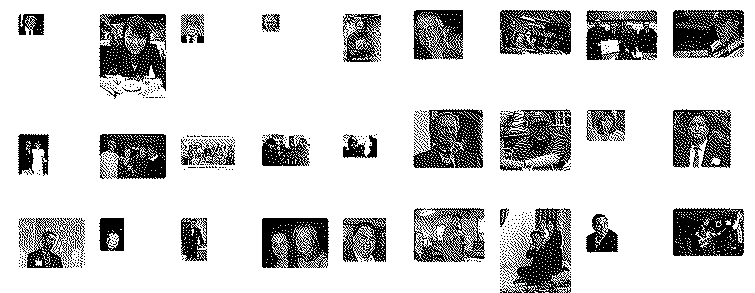
ImageNet is one of the first datasets AI researchers are exposed to when learning and experimenting with computer vision approaches. Since it was released in 2009, it has been used to train and evaluate nearly every AI model in the object recognition task, and improving the state-of-the-art performance on the dataset can garner acceptance into top AI conferences and leaderboards. The process for creating ImageNet – large-scale web scraping followed by manual validation by Mechanical Turk workers – has become the de facto standard for creating AI datasets.
But despite its iconicity and ubiquity, no single “ImageNet” dataset exists. Instead, there are 9 versions of the dataset, created both by the Stanford team behind the original dataset and by the AI community at large, messily slicing and dicing at least 9 distinct versions of ImageNet. Some of these are designed for specific tasks, such as the ImageNet ILSVRC subset of a thousand classes, created to evaluate object detection and image classification. Others, such as the recent “Fall 2021” version of ImageNet, are the result of filtering and moderation aiming to improve the perceived fairness of the original dataset. These versions, and at least 7 others, are being used to train and test different AI approaches, as proxies for general (visual) understandings of images of the world.
But as Crawford and Paglen showed years ago, and researchers such as Prabhu and Birhane confirmed more recently, ImageNet contains many baked-in biases in both its categories as well as the images that populate them. Close inspection of the dataset and its categories often shocks people: surely misogynistic categories such as “ball-buster” and racist categories such as “redneck” can’t possibly be used for training object recognition systems? But these categories, and many other harmful ones, still persist in the versions of ImageNet being used to train large-scale AI models today. Even if these problematic categories are not used for downstream tasks (i.e. if the models are adapted on task-specific datasets that replace the initial categories), the biases that are encoded by AI models trained on images representing misogyny and racism percolate into downstream model functionalities as well, for instance when models are used in applications like predictive policing and have learned to associate people from a given identity group with concepts like criminality or violence.
Tools like see:set enable us to explore datasets like ImageNet, to poke them and probe them, to investigate them in ways that are otherwise impossible. In recent years, we’ve seen subtle shifts happen the machine learning community, questioning the “train first, ask questions later” approach advocated by the creators of datasets like ImageNet (as well as its contemporary successors such as LAION) and promoting more in-depth data exploration and a more “data-centric” approach to training and evaluating AI models. This is an approach I have wholly adopted in my own work, both within the Knowing Machines project and via other research that I am involved in, which aims both to better understand AI datasets and the values that they encode, and create tools to empower members of the community to explore these datasets themselves.
July 2023
9 Ways To See A Dataset: Investigating Datasets

9 Ways To See A Dataset: Investigating ImageNet
